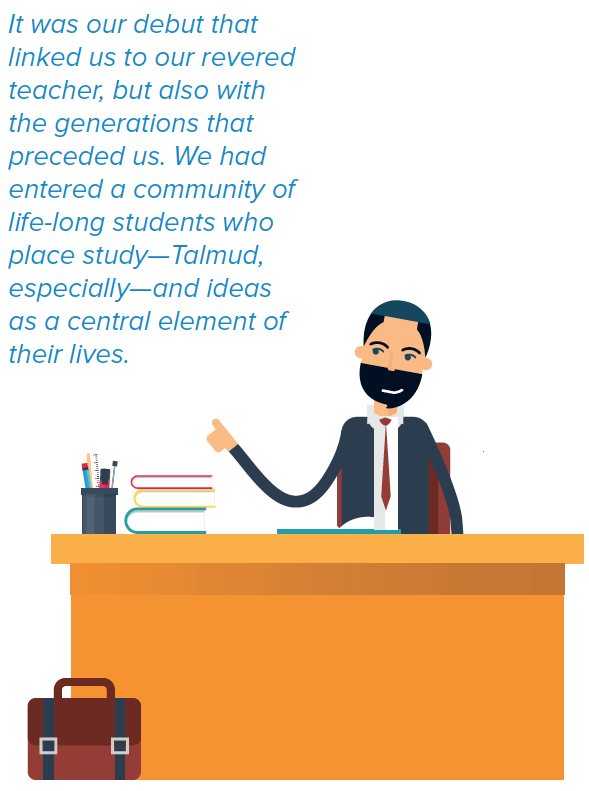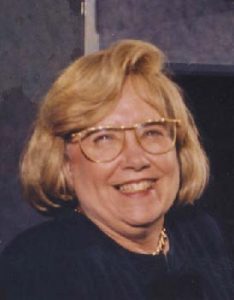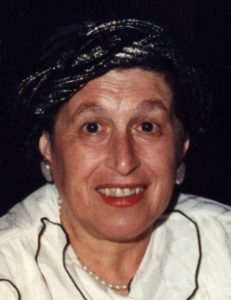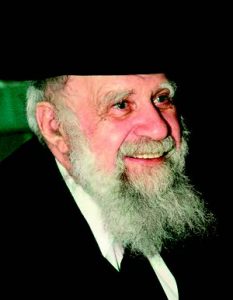Tribute to a Teacher
Some of us are lucky enough to have had a teacher or a rebbe who forever changed something within us after spending time in his or her classroom. As students of all ages head back to school, we pause for a moment to pay tribute to the special teachers in our lives.
Miss G.
By Estelle Glass
The pretty, pony-tailed young woman perched at the end of her desk was an anomaly, not anything like the other teachers we had that freshman year in high school. Miss G. was smart, fun and so cool. She switched her eyeglasses to match her clothes and she shared fascinating stories about her life. She taught not only by lecturing, but by making us participate and discuss. As a young teenager, I knew that I had found my eventual vocation. I wanted to be just like my English teacher, Miss Susan Goodside, who would serve as my role model through most of my years at Esther Schoenfeld High School in New York.
My favorite teacher taught me to love and appreciate literature. Her lessons were always innovative. Miss G.’s composition topics were never routine, but rather challenging and often mystifying. What did “Chasing Rainbows” have to do with our lives anyway? She taught us to put a great deal of thought into what we were writing before we put pen to paper. Book reports were never mere written summaries; they often included oral presentations, where even I as a shy freshman felt comfortable enough to explain why I found Pride and Prejudice to be the most boring novel I had ever read!
In her class, we didn’t just read assigned Shakespeare plays; we acted them out. We also acted out more modern dramas, pausing to discuss and argue about the meanings of these works. Poetry came alive as we recited poems in front of the class and later in front of the entire school in our annual declamation contests. It was a given that everyone in school waited anxiously for junior year and the magical experience of performing in front of a huge audience in the Junior Class Play. (My year, I played Ed in “You Can’t Take it With You.”)
Miss Goodside eventually became Mrs. Katz. She raised a family and went on to become the well-known and much admired high school principal of Shulamith School for Girls in Brooklyn, New York. As for me, I don’t know if I ever became just like my beloved teacher during my twenty-seven-year career as an English teacher and later chair of the English Department at Bruriah High School in New Jersey. But I certainly tried to emulate her example.
Estelle Glass, a Teaneck resident, is a retired educator who is now happily writing her own essays.
Rebbetzin
By Numi (Homnick) Stern
As a thirteen-year-old girl just starting high school at Hanna Sacks Bais Yaakov in Chicago, I probably would have preferred a younger, “cooler,” more dynamic Ivrit teacher. However, I quickly learned that my assigned teacher was Rebbetzin Ella Soloveichik, a”h, the wife of Rabbi Ahron Soloveichik, z”tl and fondly known by all of her students as “Rebbetzin.” Born and educated in Lithuania, Rebbetzin spoke with a slight accent and carried herself with the regality of a European rebbetzin of old. She came to school dressed in a formal suit or blouse with a matching hat and she hardly moved away from the desk or chalkboard while teaching. Soon enough she won us over with her gentle and loving demeanor, her sincere interest in each student, her determination to involve every student in the discussion or lesson and her deep passion for the subject at hand.
Over the course of that year, several of my friends and I found reasons to sporadically stop by her house on Shabbat or Sunday afternoons to say hello. She was always glad to see us and welcome us inside. I still carry with me the image of her saintly husband sitting in his wheelchair at the dining room table writing notes and chiddushei Torah. He was undeterred from this sacred task despite being partially paralyzed by a stroke many years earlier. Seeing Rav Ahron in action helped me to appreciate the stature of our Rebbetzin, his devoted partner, helpmate and caregiver.
When did Rebbetzin change my life? I cannot pinpoint one episode or moment that was life altering. The effect Rebbetzin had on her students, myself included, was subtle; she slowly chipped away at the crust of American teenagehood that encased so much of our souls. Just the fact that we came to love and respect a refined, elderly and scholarly person such as she helped us to mature and rid ourselves of some of the myopia and egocentricity of childhood. And while I did not realize it initially, the lessons and values that Rebbetzin imparted to us had a profound impact—an impact that is still with me today, many years after her passing.
Rebbetzin was my teacher again in eleventh grade; the subject was Jewish history during the Second Temple era. In twelfth grade, it was back to Ivrit with a focus on Hebrew literature. She was a wellspring of Torah knowledge and a master of Jewish history. While I do not remember much of the content of those lessons, “Devarim hayotz’im min halev nichnasim el halev, Words that come from the heart [of the speaker] penetrate the heart [of the listener].” Her ahavat Yisrael (love of every Jew), ahavat Eretz Yisrael (love of the Land of Israel) and ahavat Lashon HaKodesh (love of the Hebrew language) were constantly being transmitted, no matter what the day’s lesson was meant to cover. Those three loves have stayed with me, and I’m sure countless other students of hers would say the same.
“Mi k’amcha Yisrael, Who is like your nation Yisrael?” and “Yisrael, af al pi shechata, Yisrael hu, A Jew, even when he sins, remains a Jew” were both common expressions of hers. Rebbetzin implored us never to say anything negative about another Jew—certainly not in her classroom. One of the first Hebrew pieces she taught us was Rabbi Yehuda HaLevi’s famous poem of longing for Eretz Yisrael, Libi BaMizrach. “Kol hamitabel al Yerushalayim zocheh v’ro’eh b’simchata, Whoever [truly] mourns for [the destruction of] Jerusalem will merit to see her rejoicing” was another ma’amar she repeated many times.
 She exposed us to the gamut of political and social views of Medinat Yisrael, with two primary lessons: to treat every Jew with love and respect and to be grateful for the opportunity to walk the streets of Eretz Yisrael, to live there and to learn Torah there—an opportunity many great people before us never had. What about the language—was it Lashon HaKodesh or Ivrit? For Rebbetzin, they were one and the same. Yes, she wanted Jews to be comfortable with spoken Hebrew. But the Rebbetzin’s Hebrew was not “Modern Hebrew.” Her Hebrew was replete with pesukim from the Nevi’im and ma’amarei Chazal, sayings of the Sages, many of which she insisted we memorize. Rebbetzin was also a poet. She wrote a variety of poems in Hebrew, some light and playful, some more heartfelt. In so many ways, she demonstrated to us the richness and versatility of the Hebrew language.
She exposed us to the gamut of political and social views of Medinat Yisrael, with two primary lessons: to treat every Jew with love and respect and to be grateful for the opportunity to walk the streets of Eretz Yisrael, to live there and to learn Torah there—an opportunity many great people before us never had. What about the language—was it Lashon HaKodesh or Ivrit? For Rebbetzin, they were one and the same. Yes, she wanted Jews to be comfortable with spoken Hebrew. But the Rebbetzin’s Hebrew was not “Modern Hebrew.” Her Hebrew was replete with pesukim from the Nevi’im and ma’amarei Chazal, sayings of the Sages, many of which she insisted we memorize. Rebbetzin was also a poet. She wrote a variety of poems in Hebrew, some light and playful, some more heartfelt. In so many ways, she demonstrated to us the richness and versatility of the Hebrew language.
Toward the end of twelfth grade, for our school’s annual library tea the entire student body was asked to submit short essays or poems pertaining to the theme of “hero.” My friend Shoshana and I made an acrostic of the words eishet chayil (in Hebrew, of course) describing our esteemed Rebbetzin, while incorporating as many of her favorite expressions as we could. Rebbetzin was out of school at that time undergoing medical treatment, and we were unable to share the poem with her. She missed our high school graduation due to her illness and passed away that summer. Yet I was comforted to hear that Rebbetzin’s daughter read our poem to her during the last few days of her life and it had brought a smile to her face. Though I was out of town at the time of her passing and missed her levayah, I did make it back to Chicago in time to be menachem avel the family. The family described how Rebbetzin was at peace at the end of her life, like Shlomo HaMelech’s Eishet Chayil, “Vatis’chak l’yom acharon, And smiling, she faced the last day.” How she had the words of that epic Hebrew poem and prayer, Adon Olam, on her lips; “V’im ruchi g’viyati, Hashem li v’lo ira, And with my spirit, my body as well [I entrust to God], God is with me, I shall not be afraid.”
How befitting that Rebbetzin passed away during the Nine Days; her neshamah always seemed to be in sync with the history of Am Yisrael and Eretz Yisrael. I have no doubt that Rebbetzin will rejoice together with the Jewish nation when Yerushalayim is finally rebuilt—may it be speedily in our days.
Numi (Homnick) Stern graduated from Hanna Sacks Bais Yaakov in 2001. She currently resides in Cleveland, Ohio with her family and is a practicing speech-language pathologist.
Rabbi Simcha Wasserman
By Charles Sheer
My chavruta (study partner) and I were sitting in the beit midrash on a hot Los Angeles Shabbat afternoon. This was pre-A/C days and those long LA Shabbat afternoons could be brutal. But we had not finished our review of the gemara we had studied that week. We arranged to spend an hour before Minchah to assure that we understood the material.
We were a well-matched pair and we enjoyed studying together. My partner was quick and smart; I tended to be plodding and careful. We were studying Bava Metzia. Shortly into our review we got stuck on a passage that didn’t seem to make sense. “How did Rebbe explain this line?” my chavruta asked. We couldn’t recall if he had discussed this topic.
Our teacher, Rabbi Simcha Wasserman, was the son of one of the illustrious leaders of European Jewry pre-WWII, Rabbi Elchonon Wasserman. Rav Elchonon was rosh yeshivah of the famous yeshivah in Baranovitch, and the author of many scholarly works on Talmud and Jewish thought. He was killed in WWII by the Nazis. His son, our rebbe, had established yeshivot all over the world and was renowned as a teacher and for his saintly personality. Over the two years we had been in his Talmud class, Rebbe had advanced our Talmud skills from basic reading to a more thoughtful analysis. At that youthful age, I did not recognize what a master pedagogue he was. To this day, I have not encountered such a skilled teacher, whether in my yeshivah study, college or graduate study. Rebbe would ask us, “What is the one word on the page that Tosafot”—the classical and standard medieval commentator, printed on the side of the Talmud page in every edition since the sixteenth century— “was bothered by, and how did he resolve the problem?” He imparted his masterful analytical skills to decode a text, but even more importantly, he motivated us to love learning.
As we did our chazarah, we struggled to recall if Rebbe had discussed our problem. We worked on the sugya (Talmudic case) for a while and, to our delight, developed a solution. At our stage in learning, it was not that usual for us to do so. We were pleased with ourselves.
As we relaxed at our study table, we saw that Rebbe had come in to the beit midrash. He spied us, and the Talmud texts and commentaries spread about on our table. “Good Shabbos,” he said. “So, how has your chazarah gone?” “We were doing pretty well,” I said, “until we reached this line and got stuck.” I proceeded to tell him what bothered us.
When I finished presenting our question, Rebbe looked up at us with a broad smile. He paused for a moment, as if he had encountered us for the first time and wanted to learn our facial features. He tilted his hat back on his head and enthusiastically said, “Good question! So, did you find an answer?”
 “Yes,” I said. “We thought you could explain the gemara in the following fashion.” I cautiously proceeded to share with him our interpretation. Now, mind you, this was not a major scholarly discovery. But it was a reading that worked and we were pleased with our solution.
“Yes,” I said. “We thought you could explain the gemara in the following fashion.” I cautiously proceeded to share with him our interpretation. Now, mind you, this was not a major scholarly discovery. But it was a reading that worked and we were pleased with our solution.
And so was Rebbe. He looked at the two of us and said, “That’s exactly what the Shittah M’Kubetzet says.” (The Shittah M’Kubetzet is a classic seventeenth-century anthology of medieval commentators to the Talmud.) We were both astonished at this and sat there in silence. We two California boys—a far cry from Talmudic scholars—had developed a resolution to this question that was formulated almost a half a millennium ago which was included in one of the standard Talmud commentaries.
Before we could say anything, someone announced that it was time for Minchah. Rebbe retreated to his seat near the aron kodesh at the front of the beit midrash and services began. But I could not concentrate on them. I kept thinking about what had just transpired. When I looked towards Rebbe I noted that he was looking right at me. His eyes locked with mine as he glanced over the tall shtender in front of him. I suspect that neither of us paid much attention to our Minchah prayers that Shabbat afternoon.
As I reflect back on that moment, I think all of us—students and teacher—intuitively felt that something vitally important had occurred. Our resolution of that difficult passage entailed our entry into the world of Talmud study. It was our debut that linked us to our revered teacher, but also with the generations that preceded us. We had entered a community of life-long students who place study—Talmud, especially—and ideas as a central element of their lives.
Rebbe never said anything to me about that moment, but he really didn’t have to. He had the special pleasure of witnessing the entry of two of his students into his world and the grand World of the Talmud. What a precious moment for a teacher; what a moving moment for his students. The look of delight and pride on his face are still present in my memory, even though the episode occurred more than fifty years ago.
Rabbi Charles Sheer is staff chaplain at Westchester Medical Center in Valhalla, New York, and is on the faculty at the Bioethics Institute at New York Medical College. He holds an MA in Talmudic literature and semichah from Yeshiva University. For thirty-four years he was the Jewish chaplain at Columbia University and Barnard College.



